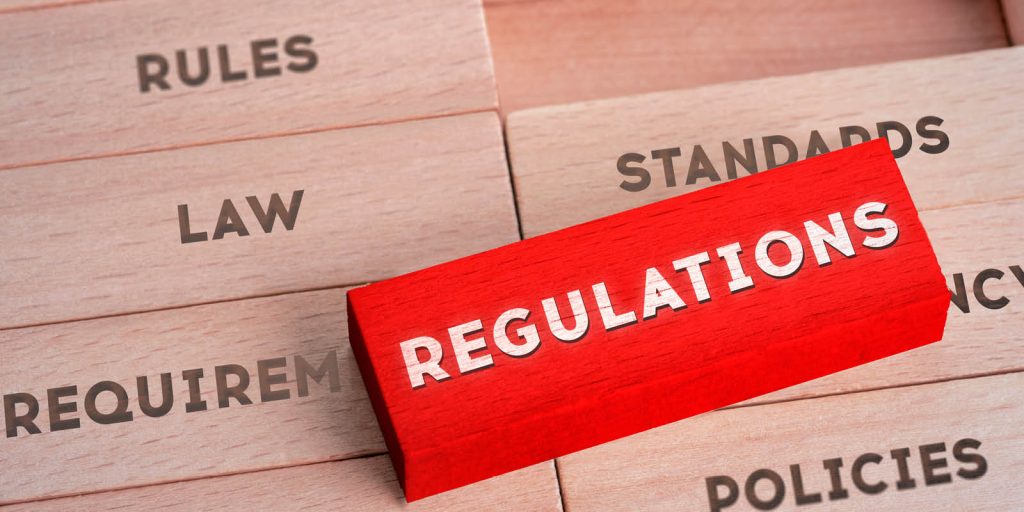Final GAWDA Consultant Roundtable for 2024
By Tom Badstubner, Marilyn Dempsey, Michael Dodd, Rick Schweitzer, and Steve Guglielmo
The GAWDA Consultant Program is a GAWDA member benefit that is included as part of your member dues to the association. It is consistently rated as one of the most valuable member benefits that GAWDA provides. Between the four of them GAWDA’s consultants bring more than 150 years of industry-specific experience to the association.
The GAWDA Consultants will be on-hand in Phoenix at the GAWDA Annual Convention to discuss the flurry of regulatory activity that has been handed down in summer 2024. With election season in full swing, Washington is in overdrive looking to shape the issues of the day. And, as always, GAWDA’s consultants are always available to explain what it all means for our GAWDA members.
Thank you to Tom Badstubner, GAWDA’s FDA and Medical Gases Consultant, Marilyn Dempsey, DHS, EPA and OSHA Consultant, Mike Dodd, DOT Consultant, and Rick Schweitzer, Government Affairs and Human Resources Consultant, for lending their time and expertise to discuss these important topics. The following is a lightly edited transcript of that conversation.
Welding & Gases Today: This is the last roundtable of the year. With that said, it will come out before the Convention and will be on hand at the Convention. It will also come out before the Professional Compliance Seminar in October. We touched on the Professional Compliance Seminar a little bit in the 3rd Quarter magazine. Is there anything that we didn’t touch on in the Q3 magazine, that we wanted to discuss today?
Tom Badstubner: Since then, our presentations have been refined a little bit. On Tuesday of the seminar, I’ll be covering a detailed look at CFR213, the new medical gas regulations, at a detailed level. This will include some other parts that are also being newly applied to the industry, like 314 annual reports for manufacturers. The FDA will be talking about the new regulations.
Marilyn Dempsey: Similar to Tom and the FDA regulations, OSHA has changed the Hazard Communication Standard, 29CFR1910.1200. These changes move the Hazard Communication standard’s alignment from the UN Global Harmonization Standard (GHS) version 4 to GHS version 7. One of the biggest changes to the standard concerns hazard classifications. Specifically, the “Intrinsic properties.” OSHA requires the hazard classification to now include any hazards associated with the chemical’s intrinsic properties including:
- (A) a change in the chemical’s physical form and;
- (B) chemical reaction products associated with known or reasonably anticipated uses or applications.
OSHA has not defined what “common use,” means and it could be any process. This new requirement opens a Pandora’s box because the interpretation will be made by the local inspector. For instance, shielding gases, oxygen and acetylene, are used in welding or brazing applications. These processes create fumes that could potentially be harmful, so this may need to be recorded on an SDS.
What is going to be considered a downstream hazard? The people who define hazards (like CGA) and those who create the SDS have a lot of work to do in the next year and a half.
And every SDS that has a significant change will have to be redistributed.
Also, the verbiage on several labels will be changed. Not significantly, but again, the local inspector will have an opinion on if a modified term is significant. The question for the distributor is, do you want to argue that significance with the inspector?
A cost analysis is posted in the Federal Register for the changes to labels and SDS. The costs appear to be rather low, but OSHA feels that, “chemical manufacturers and importers periodically review, revise, and update the electronic templates they use to create SDSs and labels” so the costs should not be that great and all costs should be realized in the first year of compliance.
Another cost analysis for NAICS code 325120 at “small entity” companies there will be 1.4M labels and 602 SDS affected by this revision (p. 44177 Federal Register) – that is a lot of labels to be changed!
Within the Federal Register there are several cost analyses, and the bottom line is that we have a lot of work to do: revising SDS, revising labels, revising your company’s Hazard Communication Program and training employees. I’ll be discussing the changes and how they’ll affect our industry; as well as covering the components of a safety program at this fall’s Professional Compliance Seminar – Oct 22-24.
Tom: If we store our bulk product as a liquid and then vaporize it you get a change of state that creates more regulation.
Marylin: It’s a bit gray. We talk about manufacturing gases but in one article I read on the revised standard it mentioned that Soda cans on a shelf may need a separate SDS because of the recycling of the aluminum can. The inclusion of downstream product use is a large concern to those who write the SDS. I talked with Asterisk about their SDS and writing them; they’re saying they’ve got to be careful defining normal use versus recommended use. I’ve also talked to label companies as well as CGA staff and it comes down to how a downstream hazard is defined.
WGT: How about you Mike?
Mike Dodd: My day is going to be so much easier. My day is Thursday, and a lot less new, as far as regulations go. Tom and Marilyn are covering a lot of new regulations, but thankfully with the things I’m covering, nothing has really changed. My day will be about filling cylinders. High pressure cylinders, liquified like CO2, cryogenic like with our cryogenic liquid containers. And I’m going to be putting special emphasis on the markings on the shoulders and markings on the package. Telling people what those markings mean. They will better understand the package they’re dealing with. Then I’ll be talking about things we’ll be looking for during their inspection. Defects, problems and things that would make the cylinder unsafe. Putting the molecules in the cylinders is actually very easy. I emphasize the safety of the package, and the rest of the system takes care of itself pretty well. We’ll have a full day of filling cylinders with lots and lots of pictures.
WGT: I know we’ve hit this before, but it probably bears repeating; there is a simulcast component but there is a benefit for being there in person. You lose something by not being there, correct?
Tom: You do. You lose engagement and networking. That’s valuable. However, there are also some really valid reasons for doing this remotely. If you live in California and you only want to come for the Wednesday topic, it’s a big trip for one day. There are legitimate times for people to choose the online version, even though you miss out on the networking. You also get less amazing lunches from Weldcoa if you aren’t there in person.
So, there is legitimate place for the online version. We started these because we really had to, during COVID, and for now we’ll be continuing hybrid seminars for those who want the networking experience and still keep open the remote for those who can’t travel. We still want them to have the information.
Marylin: The fall training will focus on Hazard Communication. Meanwhile, Rick and I are waiting for the heat illness prevention program that is a proposed rule. The government seems to be working on things fast and furious, likely because the elections are coming up.
Rick Schweitzer: The proposed rule to prevent heat injury and illness for workers was published in the Federal Register on August 30; comments are due by December 30.
WGT: In the July 15th Safety & Compliance section of the GAWDA Connection, we touched on a few issues I was hoping to touch on. Specifically, “Federal court issues preliminary injunction against the non-compete rule,” “Federal court enjoins the overtime rule as to state of Texas,” “DOT secretary asserts the marijuana reclassification will not affect drug testing requirements,” “OSHA issues proposed rule to protect workers from heat illness & injury” and, of course, the big one, “Supreme Court decisions push back on agency overreach.” Rick I’m going to toss it over to you. What’s going on in the world of Washington?
Rick: The Department of Labor overtime rule went into effect July 1. There are at least two cases that have challenged this in Federal Courts in Texas. One case has a preliminary injunction, but it only applies to the state of Texas as an employer. It does not impact private employers. There’s another case involving the U.S. Chamber of Commerce, the Texas Chamber of Commerce and others, where the judge is considering a preliminary injunction, but we don’t have a decision yet. So, that has not changed since the last time we talked.
On the FTC non-compete ban, a federal court judge in Texas issued a permanent injunction and held that the FTC did not have authority from Congress to impose such a ban. So, the rule will not go into effect.
But there’s another case that was brought into federal court in Pennsylvania, where the judge took the opposite approach as to whether or not the FTC has the authority to implement this type of legislative rule. The judge found on behalf of the FTC, and said, “Yes, they have authority, and this ban can go into effect without a preliminary injunction.” Two separate courts going separate ways. This will have to be decided in the Court of Appeals at some point and might end up at the Supreme Court at some point. That’s where we are today.
On the DOT marijuana reclassification, we are at the same place as before. The Drug Enforcement Administration wants to reclassify marijuana as a schedule III in the Schedule of Controlled Substances, which seems to be a more appropriate classification based on its actual properties and medical uses. There is a question as to whether or not that will impact DOT’s ability to require marijuana testing for truck drivers and other transportation workers. The Secretary of Transportation has testified before the House saying “No, that’s not a problem. We don’t see that as a legal issue, because the statute that authorizes us to test for drugs specifically mentions cannabis by name and does not say that we can only test for schedule I and schedule II, which is the issue here.” This is an unresolved matter at this point. We’re going through the rule making now and ultimately this will be up to the Department of Health & Human Services and the DOT to resolve. My expectation is that DOT is still going to require testing for marijuana. Everyone in the transportation industry wants to continue testing truck drivers and airline pilots for marijuana. I think they will find a way to continue the program as is.
The only other thing I’d say is that we have an election coming up, which will have a huge impact on regulatory changes. One area is more defined: mandates for electric vehicles. Right now, the Biden administration has an aspirational goal of having 50% of all U.S. vehicle sales being battery electric vehicles by 2030. When she was running for Vice President in 2019, Vice President Harris issued a policy saying she wanted to be more aggressive and see 100% electric motor vehicles sold in 2030. In speaking to the Republican National Convention, former President Trump said that he will repeal all electric vehicle mandates on the first day in office. I’m not sure exactly what that means, because there are a number of different things that could apply to EPA, SEC, DOT car requirements etc. He is anti-electric vehicle mandate. That is one significant pathway where regulatory policy will be affected by the election results.
WGT: The outcome of the election will have an effect on policy/regulation. If Harris wins it would be status quo. If Trump were to win it would be, at least in some ways, a reversion to the four years prior. Is that fair to say? Do you have any advice to members, or is more or less just wait and see?
Rick: To the extent that we have regulations in place or scheduled to go into place, then you have to assume that they will be enforceable after the election. If that changes, should Mr. Trump win, then yes, there will be a 180-degree pivot in regulatory policy. You simply have to, going forward, behave as if the status quo will remain in effect.
WGT: Is there anything regulations-wise you want to leave members with, knowing that this is the last issue of the magazine for 2024?
Mike: Not so much any regulatory things. This week, I was reminded that we have members receiving emails that look extremely official from DOT and they’re nothing more than scams. This was a brand new one for me. Someone was trying to get one of our members to fill out an NCS5889 (a new entry or change of status as motor carrier.) This is a long-established company, and he was wise enough to call me and I looked at it and said this wasn’t right. They had a link in their email that took them to the real DOT website. I said, “Listen; contact this helpline number. They immediately said ‘that is a fake email. that is not us.’ If you want to report it, you can report it to the FBI or antispam organizations.” DOT isn’t one to send out reminders to do something. I’ve had organizations calling our members trying to get them to update their MCS-150 through them in order to get a fee for it, when it’s free on the DOT website. Our members just need to be aware that if they get anything that’s through DOT via email it’s best to contact DOT, or me or Rick and we’ll let them know if it’s junk mail or a bonified notice.
Tom: From an FDA perspective, there are two things. First, this would be a great time to take care of your CARES Act reporting. Beginning next year, we’ll have a lot of work to do regarding new procedures and the CARES Act is not going to go away. If you haven’t submitted your CARES Act in the past three years, contact us and we’ll give you a sheet on how to do that.
We’ve had some pretty significant inspections recently. I’d remind members that the FDA is still out there and doing inspections. Continue to do well on FDA audits.
Marilyn: Two things. First, the hazard communication standard that came out includes training. Which means companies must have a written program and train their employees on that program. And if/when the heat illness prevention plan comes through, OSHA is requiring that employees have participation in the creation of the program.
The best thing that any manager or owner can do is “management by walking around.” Walk around, talk to employees, find out if they’re following your procedures. Ask them questions. See where their pinch points are. It will make 2025 easier to step into. When in doubt call your consultant!







